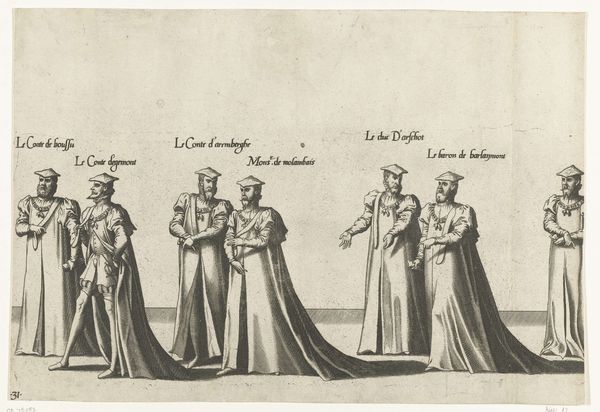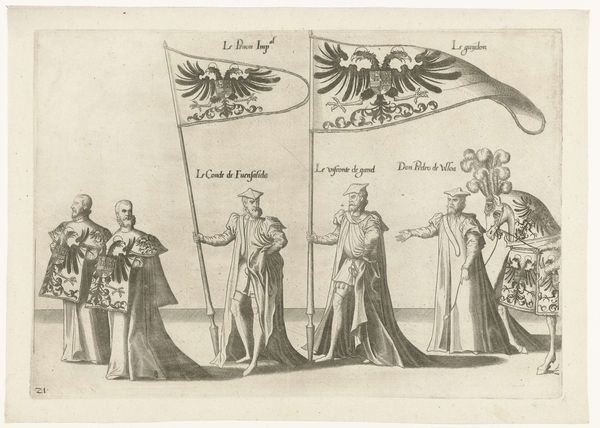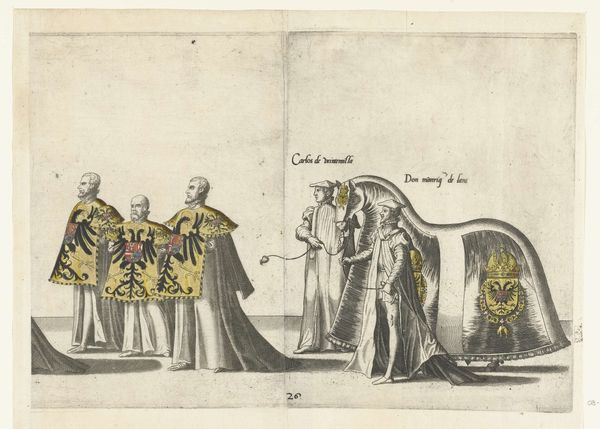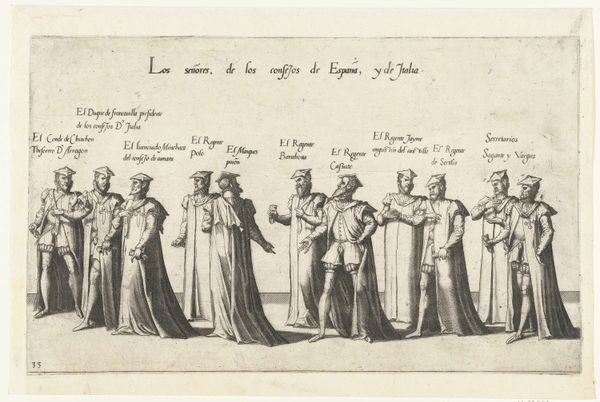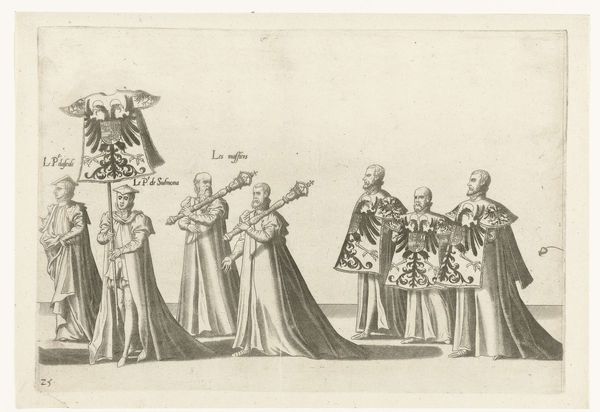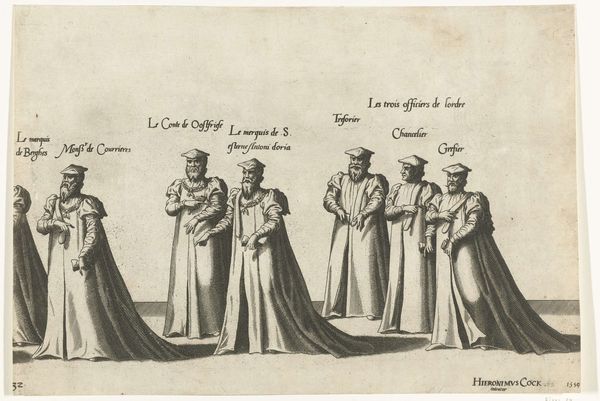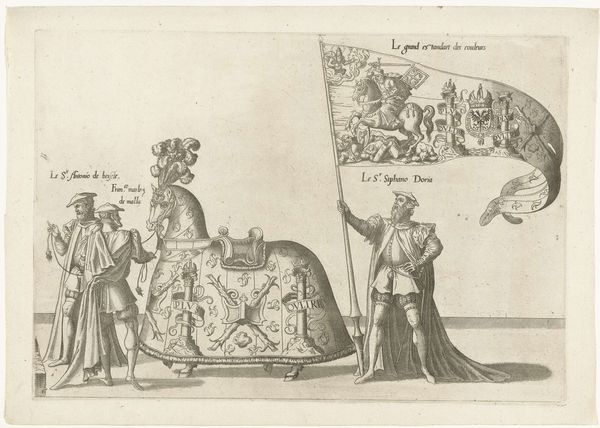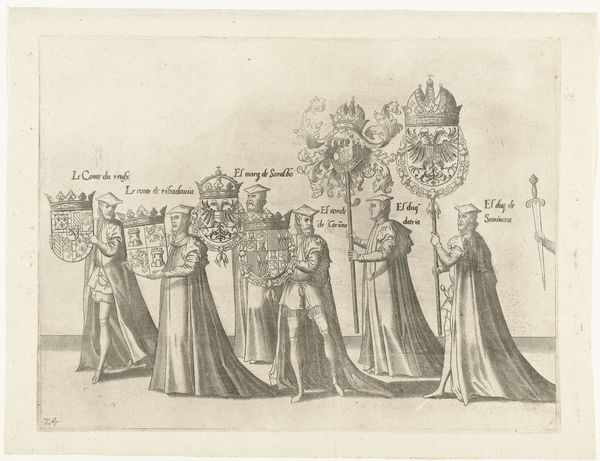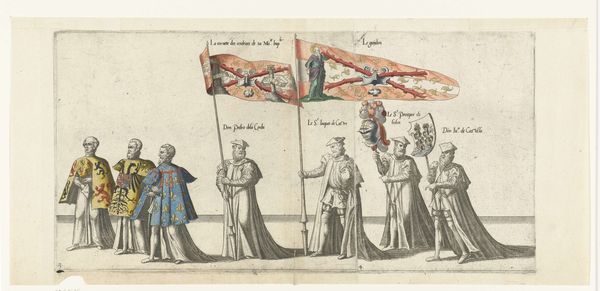
print, engraving
# print
#
figuration
#
11_renaissance
#
group-portraits
#
history-painting
#
northern-renaissance
#
engraving
Dimensions: height 236 mm, width 344 mm
Copyright: Rijks Museum: Open Domain
Curator: Here we have “Deel van de optocht, nr. 29,” or “Part of the Procession, No. 29,” an engraving made in 1559 by Joannes van (I) Doetechum. It is held here at the Rijksmuseum. Editor: My first impression is how stately it all seems. The stark contrast in the etching gives each figure such gravitas. They’re not doing much, yet there’s a real sense of occasion, all very formal. Curator: Yes, and each figure represents someone specific, identified by the text above their heads – Le Marquis de Las Navas, Le Comte d'Olivarez. This isn't just a generic crowd; it’s a carefully constructed portrait of power, walking in procession. The clothing, even just rendered in print, broadcasts status. Think about the weight these visual signifiers would carry. Editor: Precisely, the weight. Visually, too, that repeating motif of the staffs – vertical, uniform – almost reinforces a feeling of rigidity, of codified authority, that everything must fall in line. Doetechum really understands how the interplay of line and form impacts the feel. Curator: Absolutely. Beyond aesthetic pleasure, this image also served as a powerful document. Imagine viewing this print in the 16th century. It reinforces existing hierarchies, communicating the order of society, its values, through the depiction of these men. Editor: And the rendering of their faces, individualized and perhaps subtly idealized – the slight variations implying moral strength and noble character. Even with just the lines of an engraving, Doetechum manages a potent psychological element. Curator: Right down to how they stand, their gestures. It reinforces and transmits cultural memory – who belongs where in the hierarchy, and the accepted visual language that expresses those social categories. The attire broadcasts it all. Editor: Seeing how deftly Doetechum orchestrates all those elements – light, line, implied depth – gives this relatively simple print such staying power. It is far more than the sum of its lines. Curator: For me, the work's value stems from its ability to freeze a moment, encoding it with significance and handing it down across centuries. Editor: It reveals to a formal eye the timeless essence of representation itself. A powerful reminder of art’s many registers.
Comments
No comments
Be the first to comment and join the conversation on the ultimate creative platform.
